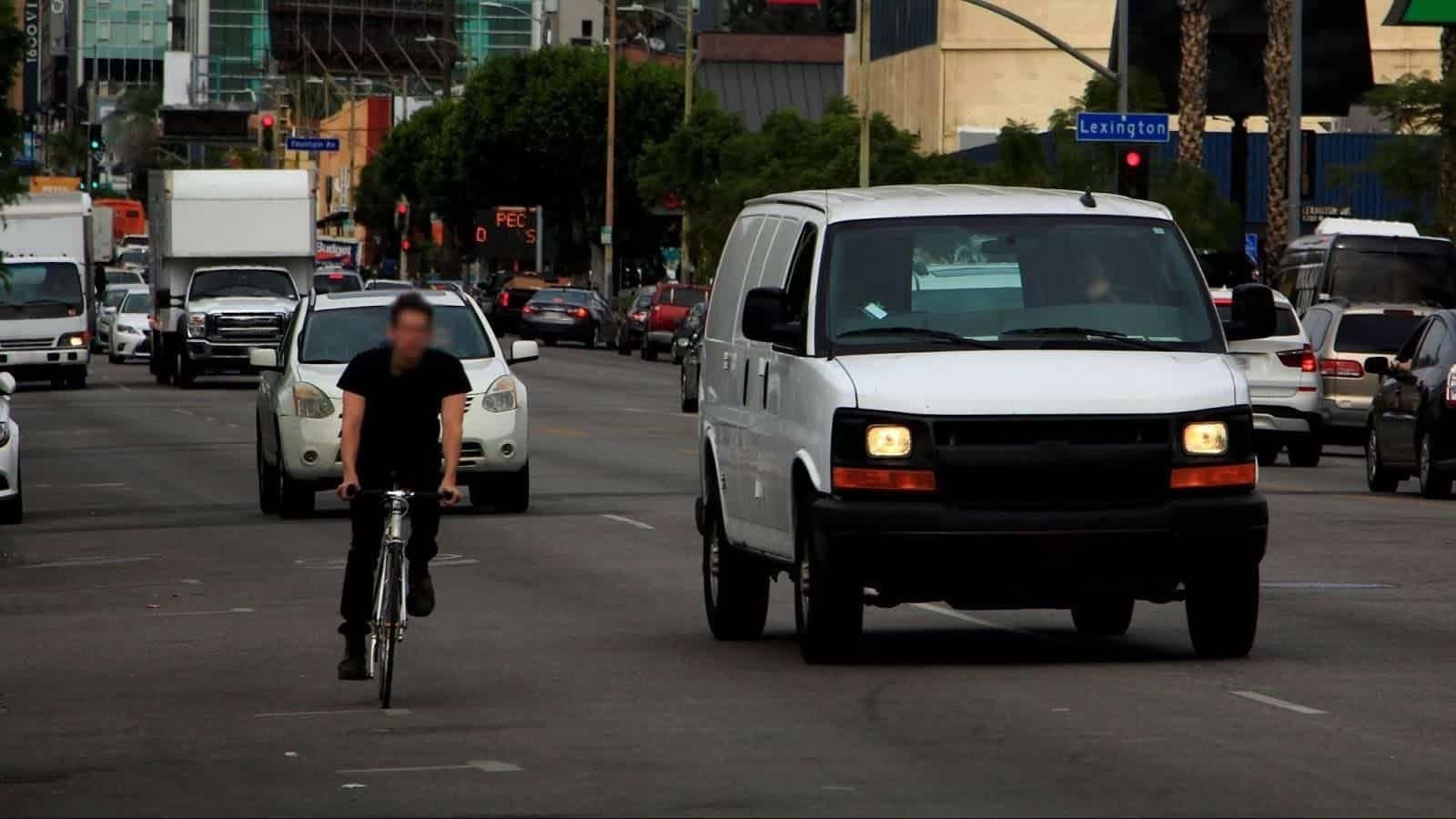
Sharing the Road with Other Road Users
As a driver, you must learn the rules of sharing the road with bicyclists, motorcycles, trucks, slow moving vehicles, low speed vehicles and horse-drawn carriages. Sharing the road requires that you understand how to adapt when you are driving to make the roads safe for everyone.
Bicyclists
Bicyclists have the same rights and responsibilities as other road users and must obey the same rules of the road. However, they are smaller and often tricky to spot.

Bicyclists must travel in the same direction as motor vehicles, but this is not always the case. Drivers can share the road with bicyclists safely by using the following tips:
- Treat bicyclists as slow-moving vehicles on two-lane or narrow roads. Only pass if you can safely do so.
- Do not pass too fast/close. The wind gust from your vehicle can send a rider off balance. Give at least 3 feet of clearance.
- Do not follow too closely behind. Cyclists may need to suddenly react to a hazard, such as a pothole in the road surface or an obstruction in the bike lane.
- Yield to all bicycles in the bike lane. Only turn across or merge into the bike lane when safe.
- Do not turn across their path. Bicycles can reach high speeds, especially when traveling downhill. Unless you are certain that you can safely turn in front of bicyclists, let the bicyclist pass before turning.
- Don’t honk or use high-beam headlights towards bicyclists. Give cyclists enough room when passing.
Drivers must be aware of bicyclists and should:
- Look and scan for bicyclists at intersections.
- Look for bicyclists before opening car doors.
- Be aware that riders can be hidden from view by other vehicles.

Before making a right turn or moving across a bike lane, check your mirrors and blind spots for bicyclists. Make sure that you will not block them.
Motorcyclists

How to safely share the road with motorcyclists:
- Never share a lane with a motorcyclist, even when they appear to only use some of the lanes.
- Look for motorcyclists before changing lanes, turning or entering a road. Remember, a motorcycle is relatively small and can be hard to detect.
- Don’t pass too close. The wind gust from your vehicle can make the rider lose control over the motorcycle.
- Maintain a minimum following distance of 4 seconds in good conditions. Motorcyclists are generally able to stop faster than you, which means you need to keep a longer following distance to be able to stop in time.
- Understand that poor road conditions will affect a motorcyclist much more than a driver of a passenger vehicle. For example, a pothole in the road can cause a motorcyclist to suddenly change direction, while drivers of passenger vehicles would see it as a minor annoyance.
- Expect a motorcyclist to be traveling faster than it looks, and to be closer than it appears.
Keep in mind that the turn signals on a motorcycle will not automatically turn off, so make sure a motorcyclist has completed turning before you move across its path.
Also, be aware that motorcyclists commonly slow down by downshifting, which means that they don’t activate their brake lights
Slow-moving vehicles

Farm tractors, road maintenance vehicles, and other slow-moving vehicles aren’t designed to travel at high speeds. They are usually restricted to 25 mph or less and have an orange/red triangle on the rear of the vehicle.
Adjust your speed long before reaching a slow-moving vehicle to prevent hard braking.
If you’re driving a slow-moving vehicle and a line of 5 or more vehicles from behind you, you should turn off the roadway at the nearest safe or sufficient turnout area. Let the line pass, and then rejoin the traffic flow again.

Horse-drawn Carriage

Horse-drawn carriages must adhere to the same rules as vehicles. On single-lane roads, they must move to the right to allow the traffic to pass.
Drivers of motor vehicles must keep a safe distance from horse-drawn carriages and pass slowly so as to not scare the horses. Slow down and pass with care or come to a complete stop, if necessary.

600+ exam-like questions and practice tests
Easy summarized DMV handbook
America’s #1 driver’s ed app with a 95.8% pass rate
Recommended articles
Ace your DMV test, guaranteed
Want to Be the Top School in Your Area?
- Simple & automated admin
- More time for teaching
- #1 learning materials for students


